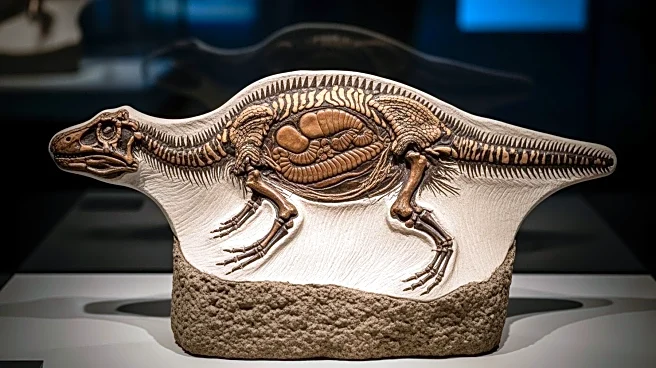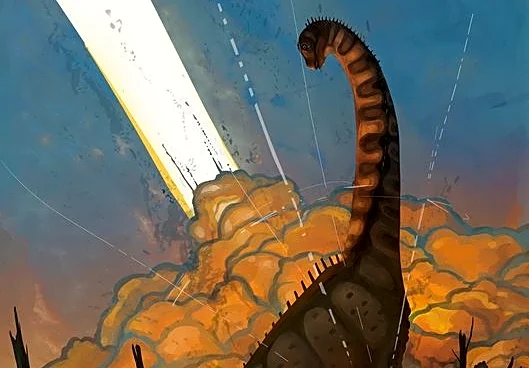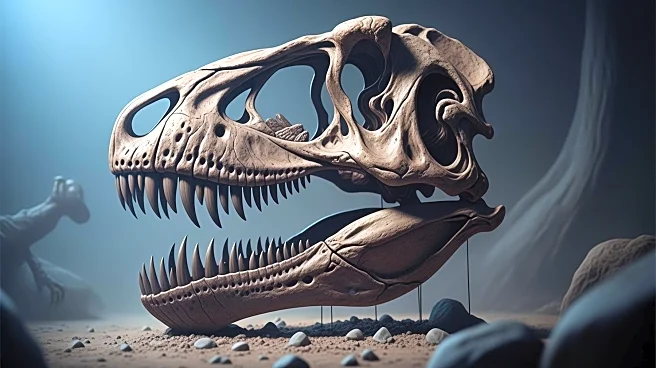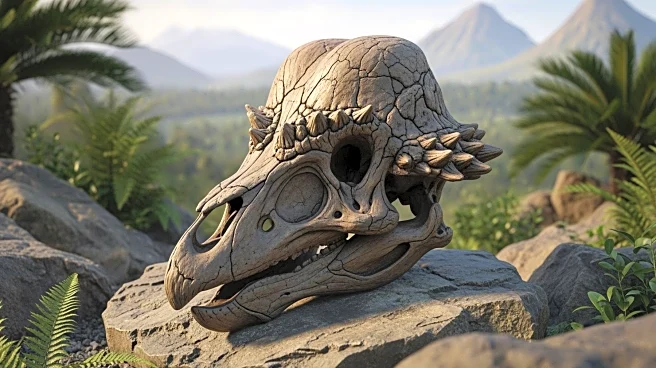What's Happening?
A 110-million-year-old nodosaur fossil discovered in Alberta, Canada, has stunned scientists with its exceptional preservation, including intact skin, armor, and internal organs. The fossil, unearthed
accidentally by miners, offers an unprecedented look at dinosaur anatomy and fossilization processes. The nodosaur, a heavy, armored herbivore, was found in marine sediments, suggesting it met its end near a body of water. The preservation is so extraordinary that scientists were able to reconstruct its life-like appearance, complete with scales and soft tissue. The fossil is now housed at the Royal Tyrrell Museum in Alberta.
Why It's Important?
The discovery of the nodosaur fossil provides valuable insights into dinosaur anatomy and the conditions that lead to exceptional fossil preservation. It raises new questions about fossilization processes and the environments in which dinosaurs lived. The intact internal organs offer a rare opportunity to study the digestive anatomy of nodosaurs, contributing to our understanding of dinosaur biology and evolution. The fossil's preservation is unmatched in North America and possibly the world, highlighting the significance of accidental discoveries in paleontology.
What's Next?
Researchers may continue to study the nodosaur fossil to uncover more details about its anatomy and the conditions that led to its preservation. The discovery could prompt further investigations into similar fossils and the environments in which they were found. Scientists may explore the implications of the fossilization process for understanding the Cretaceous marine environments and the factors that contributed to the preservation of soft tissues.
Beyond the Headlines
The nodosaur fossil challenges existing theories about fossilization and raises questions about the role of marine environments in preserving dinosaur remains. It highlights the importance of interdisciplinary research in paleontology, combining geology, biology, and chemistry to understand the processes that lead to exceptional fossil preservation.












